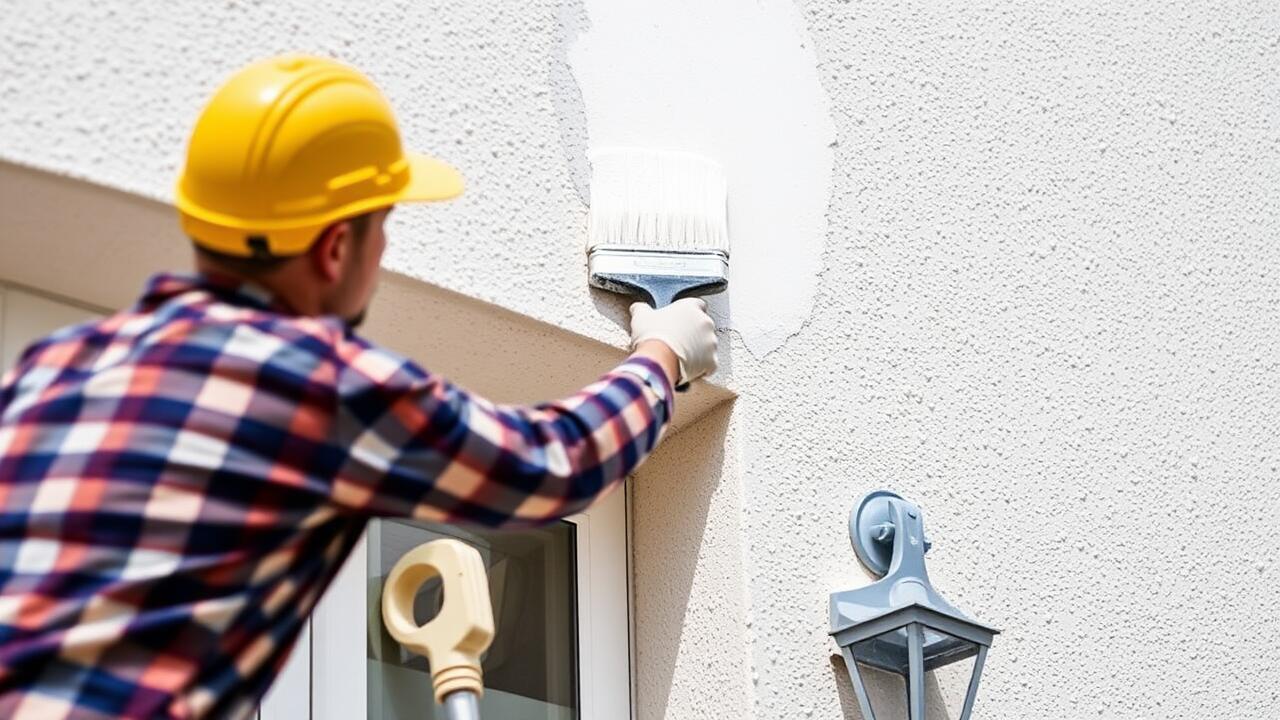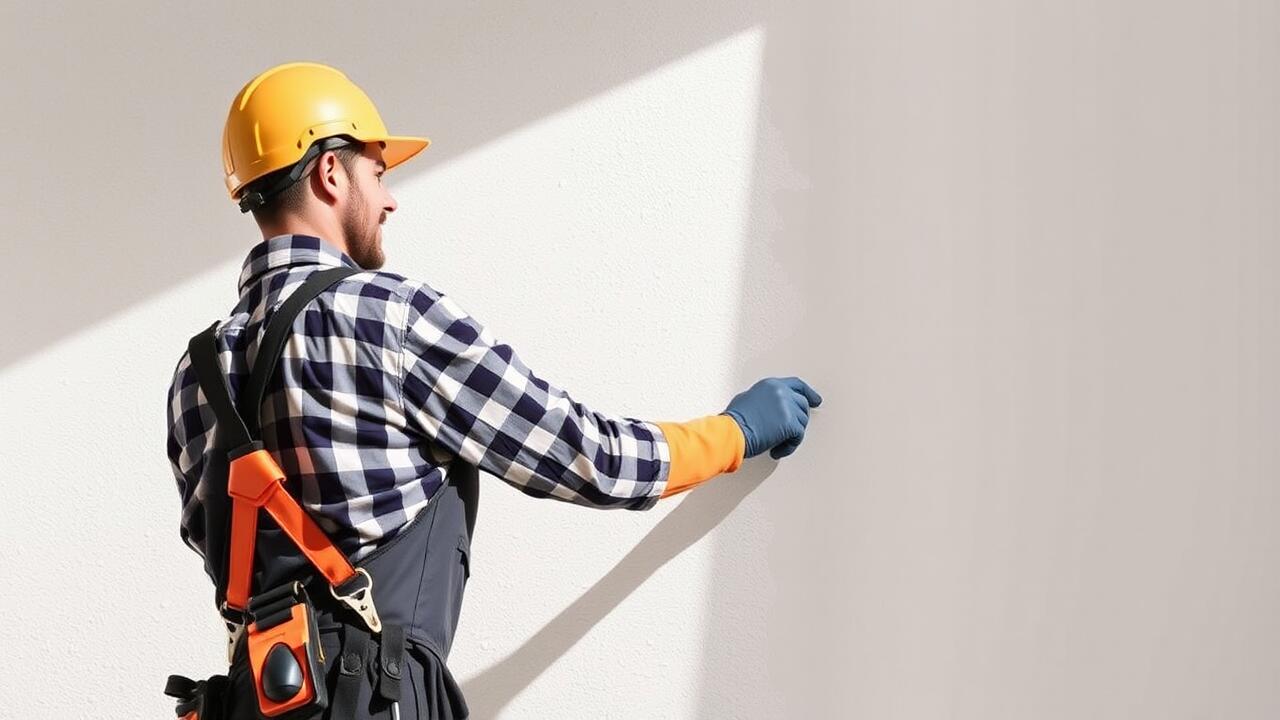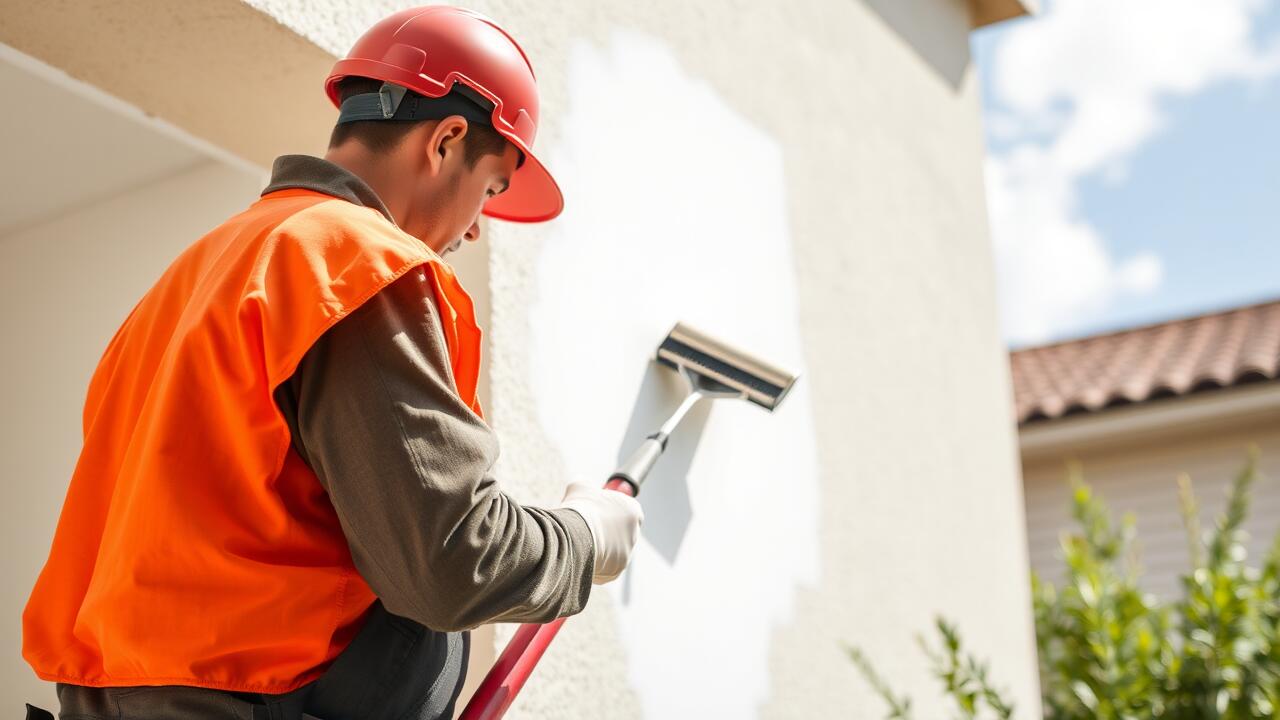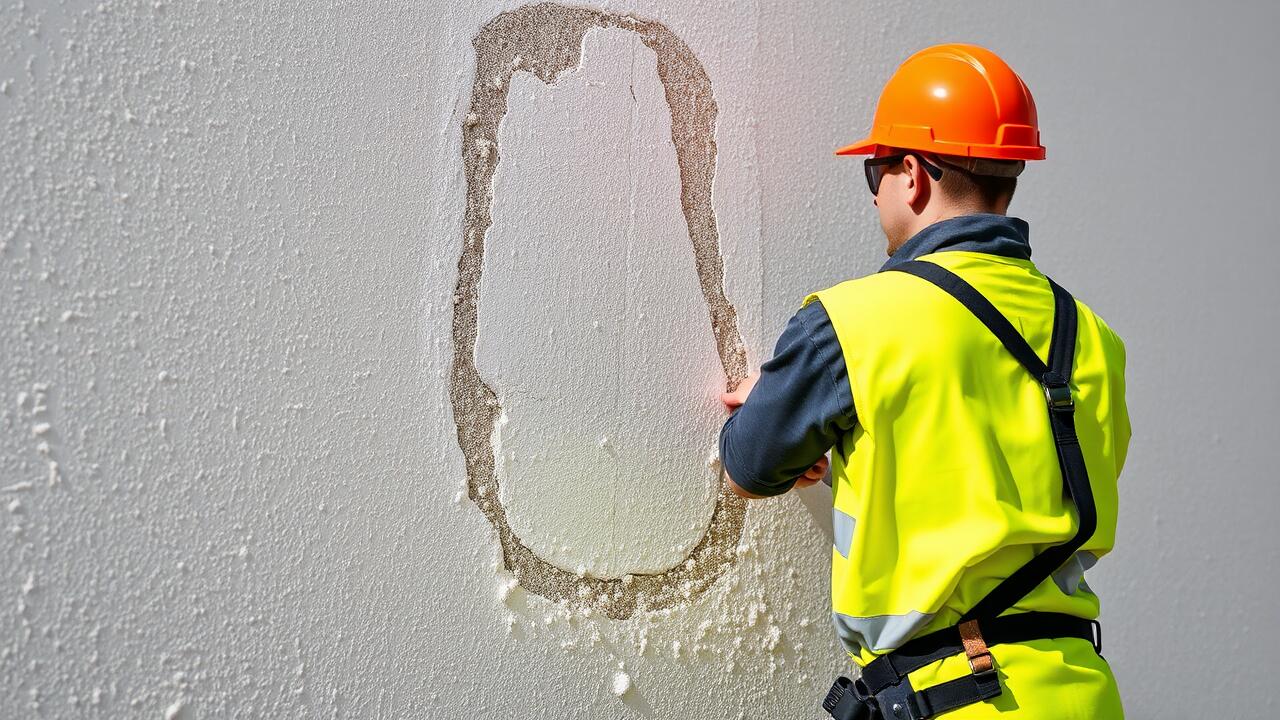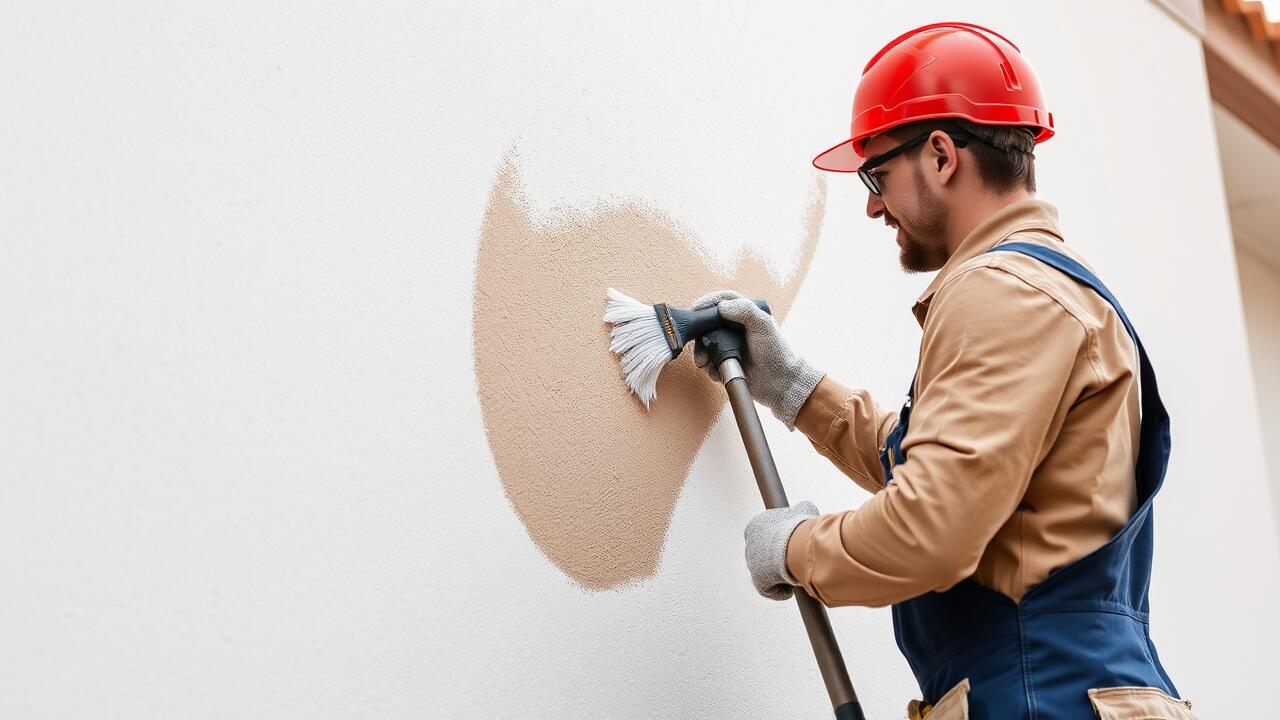
Surface Preparation Considerations
Proper surface preparation is crucial for achieving a successful stucco application, impacting both durability and appearance. Any existing contaminants, such as dirt, oil, or loose paint, should be thoroughly cleaned. This ensures that the new stucco adheres well and creates a uniform finish. Additionally, damaged areas must be repaired before applying the stucco. In Encino, Los Angeles Stucco Painting, paying attention to these details can lead to long-lasting and visually appealing results.
The type and condition of the surface also dictate which application method may be more effective. A smooth, clean substrate is essential for achieving the desired texture, whether using a sprayer or a roller. Different surfaces may require specific priming or bonding agents to enhance adhesion. In Encino, Los Angeles stucco painting, these preparatory steps set the foundation for a successful project, ensuring that the finishing touches bring out the best in the stucco work.
Requirements for Effective Stucco Application
Effective stucco application requires meticulous surface preparation and careful attention to materials. Before beginning the process, it is essential to clean the existing surface thoroughly. Dirt, dust, and loose materials can hinder the adhesion of the stucco, leading to premature failure. Additionally, assessing for any cracks or defects is necessary to ensure a smooth and durable finish. For homeowners seeking quality work, engaging professionals proficient in Encino, Los Angeles stucco painting ensures that all preparations meet the highest standards for lasting results.
Selecting the right materials is also critical for a successful application. The choice between traditional stucco mixes and pre-packaged options impacts both performance and aesthetic outcome. Proper mixing techniques contribute to the integrity of the application, ensuring that the stucco can withstand environmental stressors over time. Moreover, considering the local climate during application will help determine the best products and methods to use. This thoughtful approach is key to achieving a resilient, visually appealing stucco finish.
Effects on Texture and Appearance
The choice between spraying and rolling can significantly influence the texture and overall appearance of a stucco finish. Spraying typically provides a more uniform coat, allowing for an even distribution of the material. The result is often a smoother finish that can enhance the aesthetic appeal of a property. For those seeking a contemporary look, this method accommodates intricate designs and can cover various surface irregularities effectively.
On the other hand, rolling can create a textured finish that some homeowners may prefer. This method allows for more control over the application, leading to variations in the surface finish that provide a unique character. Many in San Pedro, Los Angeles Stucco Painting appreciate the dimensional quality that rolling offers, contributing to a distinctive appearance that differentiates their homes from others. Each technique brings its own set of characteristics, influencing the final result in both subtle and pronounced ways.
How Each Method Influences Final Look
The method of application significantly impacts the final look of the stucco surface. Spraying tends to create a more even and consistent texture, which can enhance the visual appeal of a property. This method allows for the paint or coating to be applied uniformly, reducing the likelihood of streaks or uneven coverage. Homeowners seeking a sleek finish often prefer this technique for its ability to cover intricate details without leaving brush marks. Encino, Los Angeles stucco painting specialists often recommend spraying for larger surfaces where efficiency and consistent texture are priorities.
On the other hand, rolling introduces a different aesthetic quality. This method often results in a more textured finish, offering depth and character to the surface. Rollers can be used to manipulate the texture, allowing for a more personalized finish tailored to the homeowner’s preferences. While it may take longer than spraying, the result can be equally appealing, particularly for those looking for a handcrafted feel. Choosing between these methods involves considering the desired look and the specific features of the property, ensuring that it complements the overall architecture.
Ideal Conditions for Spraying
When considering the ideal conditions for spraying stucco, weather plays a crucial role in achieving the best results. Optimal spraying should occur on mild days, ideally with temperatures ranging between 50°F and 85°F. High humidity or extreme heat can affect the consistency of the stucco mixture and the adherence to the surface. Moving forward, factors like wind can impact the application, causing overspray and uneven texture. Professionals often seek days with minimal wind conditions to maintain control over the process and to protect surrounding areas from unintended overspray.
In places like Encino, Los Angeles, stucco painting requires attention to local environmental factors. During the dry season, conditions are generally more favorable for spraying, minimizing drying issues associated with high moisture levels. Additionally, evenings or early mornings offer cooler temperatures and less sun exposure, which can help maintain proper application timing. Understanding these local weather patterns is essential for achieving a smooth, even application that meets aesthetic and performance standards.
Weather and Environment Factors
Weather plays a pivotal role in the success of either spraying or rolling stucco. Ideal conditions include mild temperatures and low humidity levels. High humidity can hinder drying times, leading to issues with adhesion and finish quality. Extremely hot weather can cause rapid drying, making it challenging to achieve a uniform application. These factors are particularly relevant for projects such as Encino, Los Angeles stucco painting, where the local climate may vary drastically.
Environmental factors also influence the choice of application method. Dust, debris, and wind can negatively affect a sprayed finish, as particles can interfere with the smoothness of the surface. In contrast, rolling may allow for a more controlled application in windy conditions. The surrounding environment must be considered carefully to ensure the longevity and aesthetic appeal of the stucco surface. Selecting the right method under the appropriate circumstances contributes significantly to the overall durability of the finish in areas like Encino, Los Angeles.
FAQS
What is the main difference between spraying and rolling stucco?
The main difference lies in the application method; spraying involves using a spray gun to apply the material, while rolling utilizes a roller to spread the stucco onto the surface. Each method has its own advantages and impacts the final texture and appearance.
Which method is better for achieving a smooth finish on stucco?
Spraying typically results in a smoother finish compared to rolling, as it allows for more even coverage and can fill in small crevices better. However, the choice also depends on the desired texture and appearance of the final product.
Are there specific weather conditions that are ideal for spraying stucco?
Yes, ideal weather conditions for spraying stucco include mild temperatures, low humidity, and no wind. These factors help ensure proper adhesion and drying of the material.
Can I use both spraying and rolling methods on the same stucco project?
Yes, you can use both methods in a single project. For instance, you might spray the base coat and then roll the finish coat to achieve a specific texture or look. Just ensure that the methods complement each other.
How does surface preparation affect the choice between spraying and rolling?
Proper surface preparation is crucial regardless of the method chosen. A clean, dry, and properly primed surface will enhance adhesion and overall finish quality, making it easier to achieve the desired results with either spraying or rolling.
